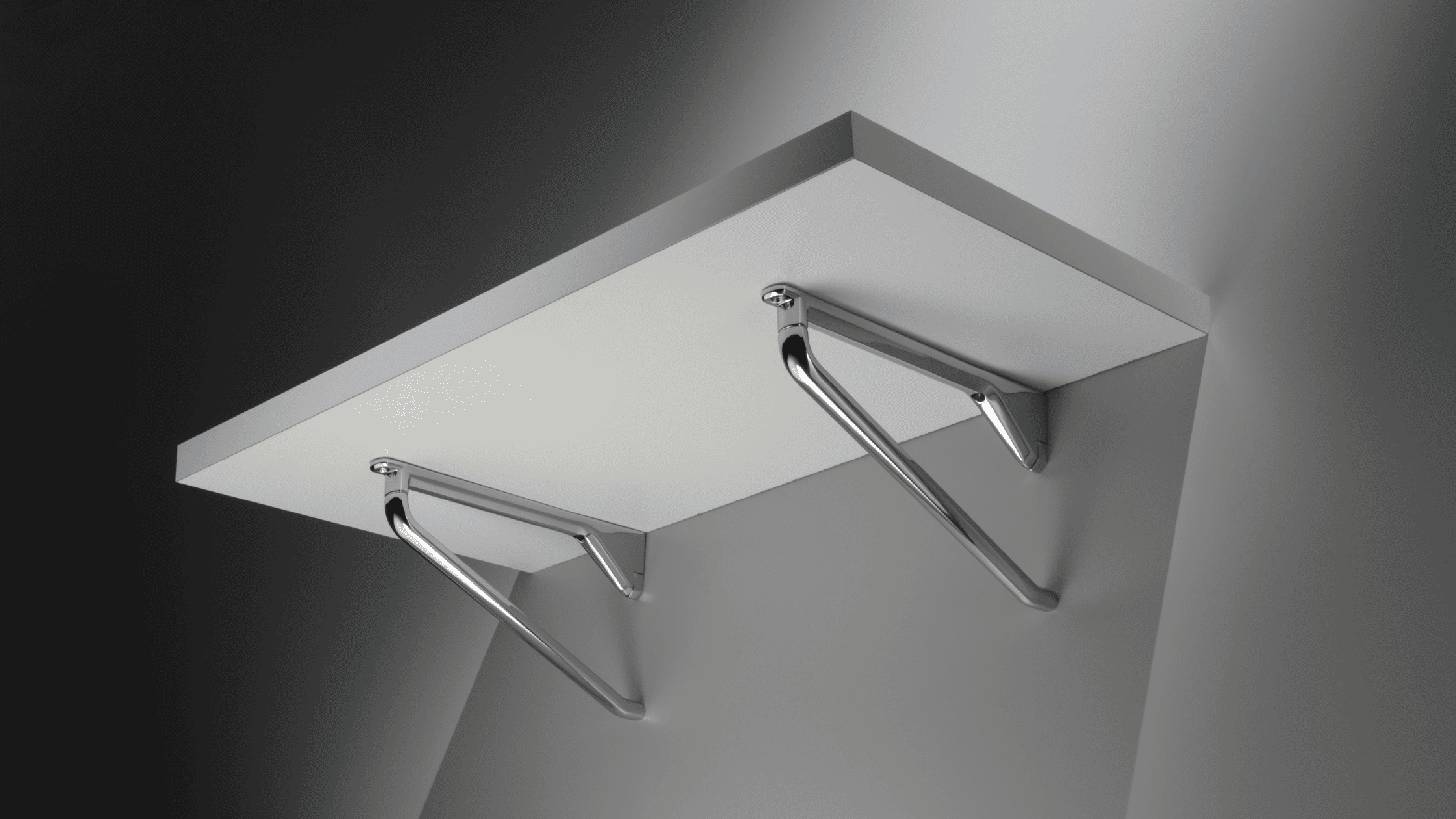Shelf Brackets: Functionality, Design, and Creativity for Your Space
Shelf brackets are often underrated elements in interior design, yet their aesthetic and functional impact can completely transform a space. Whether you’re an interior designer seeking creative solutions or a homeowner looking to blend practicality with style, choosing the right shelf bracket is essential for adding character to a room while maintaining its functionality.
In this article, we’ll explore various materials, designs, and how to choose the ideal shelf brackets for your space. We’ll also look at how these accessories can integrate into different decor styles, pushing beyond their simple support function.
Materials: Wood, Metal, Glass, and Plastic
Shelf brackets come in various materials, each with its own advantages, suited to different aesthetic and functional needs.
Wood Shelf Brackets
Advantages: Wood brings warmth and a natural touch, easily pairing with both classic and modern styles. It can be customized with various colors and finishes.
Disadvantages: It may not be the best choice for humid environments, like bathrooms, unless treated adequately. Although durable, it can warp over time if not properly supported.
Metal Shelf Brackets
Advantages: Metal shelf brackets offer sturdiness and a higher load-bearing capacity. Perfect for industrial or modern environments, metal can be crafted into decorative and sophisticated shapes.
Disadvantages: Metal can convey a “cold” feel and may not suit more traditional or rustic spaces. It can also rust in humid environments if not treated properly.

Glass Shelf Brackets
Advantages: Visually elegant and lightweight, glass provides a minimalist and refined look, ideal for contemporary spaces. It reflects light, enhancing the sense of space.
Disadvantages: Although aesthetically pleasing, glass is less robust than other materials, limiting its load-bearing capacity. It requires more maintenance to keep it clean and scratch-free.
Plastic Shelf Brackets
Advantages: Plastic is lightweight, easy to install, and available in a wide range of colors and shapes. It is moisture-resistant, making it perfect for bathrooms and kitchens.
Disadvantages: Generally less elegant than other materials and less durable in the long term, especially with heavy loads.
Modern vs. Classic Designs
Shelf brackets have evolved in design, going from simple functional supports to true decorative elements.
Modern Design Shelf Brackets
Clean lines, innovative materials, and geometric shapes are key features of modern designs. Concealed brackets, for instance, create the effect of floating shelves, ideal for minimalist spaces. Metal brackets with matte or glossy finishes, perhaps enhanced with geometric shapes, are perfect for industrial or contemporary styles.
Classic Design Shelf Brackets
Carved wood or wrought iron brackets evoke a more traditional style, perfect for those who desire a touch of timeless elegance. Curves and intricate details can add character to living rooms, studies, or entryways, evoking rustic or vintage styles.

How to Choose Shelf Brackets Based on Wall Type and Load Capacity
Selecting shelf brackets requires consideration of the wall type and the weight they need to support.
Drywall: Here, it’s essential to choose lightweight brackets, preferably mounted on studs. Wood or plastic brackets are ideal in this case.
Masonry Walls: This type of wall easily supports more robust and heavier brackets, such as those made of metal or glass.
Load Capacity: If the shelf bracket needs to support heavy items (like books, appliances, or stone decorations), choose models with thicker arms and durable materials such as metal or solid wood. Ensure that the fastenings are high quality to guarantee safety.
Decorative Shelf Brackets: Beyond Functionality
Decorative shelf brackets offer an easy way to add a touch of personality to any space. For instance, an intricate wrought iron bracket can serve as an art piece as well as a support. In a rustic kitchen, raw wood brackets can become focal points, enhancing the natural charm of the material.
For more modern spaces, a glass bracket with chrome metal supports becomes a minimalist design element that highlights lightness and transparency.
Decor Styles and Shelf Brackets
Shelf brackets are extremely versatile and can be matched to various decor styles. Here are a few examples:
Industrial Style: Choose raw metal or tubular brackets with matte finishes. Pair them with raw wood shelves for an “urban loft” effect.
Minimalist Style: Concealed or transparent glass brackets are ideal for creating neat, clean spaces with minimal visual clutter.
Rustic Style: Opt for natural wood or metal brackets with antique finishes. This style calls for accessories that emphasize naturalness and simplicity.
Classic Style: Carved wood brackets or those with elaborate finishes are perfect for more traditional environments, enhancing elegance and sophistication.
Shelf brackets are not just functional tools; they can become key elements in the design of a space, enhancing both aesthetics and practicality. Whether you’re choosing the right material, matching modern or classic designs, or incorporating decorative brackets to add character, the possibilities are endless.
When designing your interiors, don’t forget to give shelf brackets the role they deserve. They may be the detail that transforms your space.


